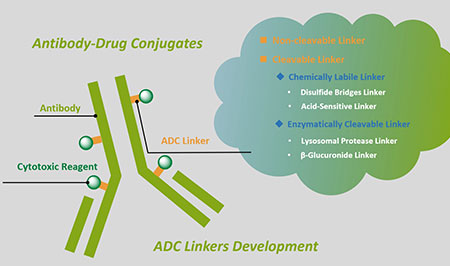Description
α-Amanitin is produced by the strain of Amanita phalloides. It is highly toxic to humans and can cause salivation, vomiting, bleeding, diarrhea, cyanosis, muscle convulsions, spasms, and death. It is the principal toxin of several deadly poisonous mushrooms and exerts its toxic effects by inhibiting RNA polymerase II.
Synonyms
α-Amatoxin; cyclo[L-Asparaginyl-4-hydroxy-L-proly-(R-4,5-dihydroxy-L-isoleucyl-6-hydroxy-2-mercapto-L-tryptophylglycyl-L-isoleucylglycyl-L-cysteinyl]cyclic (4-8)-sulfide (R)-S-oxide
IUPAC Name
2-[(1R,4S,8R,10S,13S,16S,34S)-34-[(2S)-butan-2-yl]-13-[(2R,3R)-3,4-dihydroxybutan-2-yl]-8,22-dihydroxy-2,5,11,14,27,30,33,36,39-nonaoxo-27λ4-thia-3,6,12,15,25,29,32,35,38-nonazapentacyclo[14.12.11.06,10.018,26.019,24]nonatriaconta-18(26),19(24),20,22-tetraen-4-yl]acetamide
Canonical SMILES
CCC(C)C1C(=O)NCC(=O)NC2CS(=O)C3=C(CC(C(=O)NCC(=O)N1)NC(=O)C(NC(=O)C4CC(CN4C(=O)C(NC2=O)CC(=O)N)O)C(C)C(CO)O)C5=C(N3)C=C(C=C5)O
InChI
InChI=1S/C39H54N10O14S/c1-4-16(2)31-36(60)42-11-29(55)43-25-15-64(63)38-21(20-6-5-18(51)7-22(20)46-38)9-23(33(57)41-12-30(56)47-31)44-37(61)32(17(3)27(53)14-50)48-35(59)26-8-19(52)13-49(26)39(62)24(10-28(40)54)45-34(25)58/h5-7,16-17,19,23-27,31-32,46,50-53H,4,8-15H2,1-3H3,(H2,40,54)(H,41,57)(H,42,60)(H,43,55)(H,44,61)(H,45,58)(H,47,56)(H,48,59)/t16-,17-,19+,23-,24-,25-,26-,27-,31-,32-,64?/m0/s1
InChIKey
CIORWBWIBBPXCG-JAXJKTSHSA-N
Density
1.163 g/cm3 (Predicted)
Solubility
Soluble in Water
Index Of Refraction
1.694
Optical Rotation
SPECIFIC OPTICAL ROTATION: +191 DEG at 20 °C/D; MAX ABSORPTION: 302 NM
Mechanism Of Action
In Comparison With The Phallotoxins/...The Long Delayed Hepatotoxic Response Seen In Human Poisonings...Is More Likely Due To...Alpha-, Beta-, & Gamma-Amanitin, Especially The Alpha Component. These So-Called Amatoxins...Are More Toxic Than The Phallotoxins, &, Unlike The Latter, They Damage The Nucleolus & Later The Nucleus Of Liver Cells.
In Vitro
Alpha-Amanitin decreases TAF15 mRNA and TAF15 protein levels in MKN45 cells, and inhibits the RNAPII activity towards TAF15 mRNA. alpha-Amanitin decreases cell viability by 14%, 21%, 41%, 44%, and 50% at concentrations of 100, 10, 1, 0.1, and 0.01 µg/mL, respectively. The LD50 of the alpha-Amanitin at 36 h is measured as 1 µg/mL. The total amount of protein within the cell at 24 h is significantly increased for the 1 µg/mL dose of alpha-Amanitin compared to the control. Alpha-Amanitin dramatically decreases the expression of gap junctional genes (Gja1, Gja4 and Gjc1) and gonadotropin receptor genes (FSHr and LHr) in cumulus cells.
In Vivo
The intravenous LD50 dose of alpha-Amanitin is 0.327 mg/kg body weight after intravenous injection into BALB/c mice. After 12 h of alpha-Amanitin injection in caudal vein, the levels of WBC, RBC and HGB decrease significantly, while those of BUN and Crea increase significantly in serum. alpha-Amanitin inhibits some genes (Hsp90b1, Irx4, etc.), whose encoded proteins regulate the RNA polymerase II activity. alpha-Amanitin down-regulates some proteins (Nmi, Trpc5, etc.) taking part in the transcription progress. alpha-Amanitin has potent activity in DTC suppression. Mice injected with alpha-Amanitin (0.4 mg/kg, i.p.)-treated cells maintain their body weight, while those receiving a peritoneal injection of MKN45 cells show a constant decrease in body weight.
Source
It is found in several members of the Amanita genus of mushrooms, one being the Death cap (Amanita phalloides) as well as the Destroying angel, a complex of similar species, principally A. virosa and A. bisporigera. It is also found in the mushrooms Galerina marginata and Conocybe filaris.
Appearance
Acicular Crystal
Quantity
Data not available, please inquire.
Shipping
Room temperature
Pictograms
Health Hazard; Acute Toxic
Boiling Point
1622.2±65.0 °C (Predicted)







